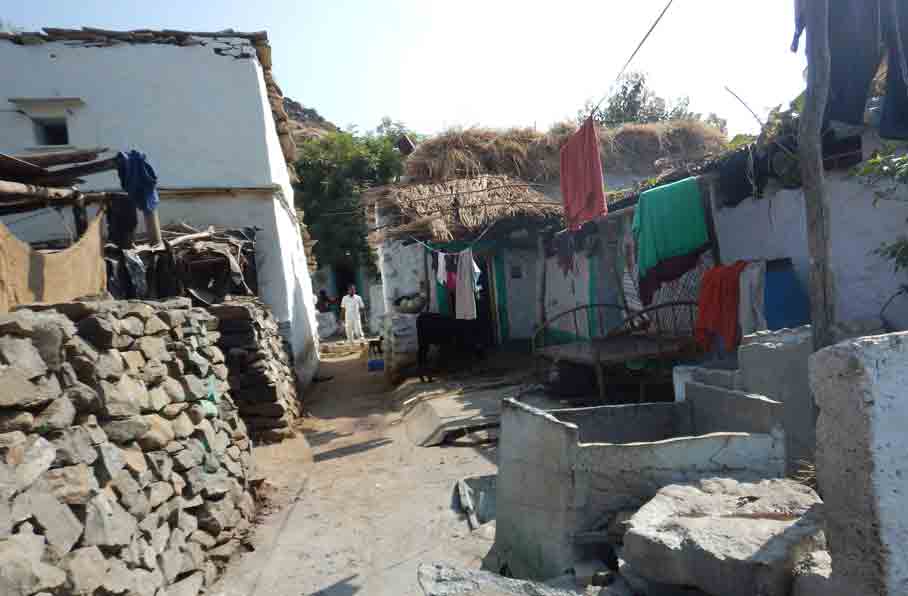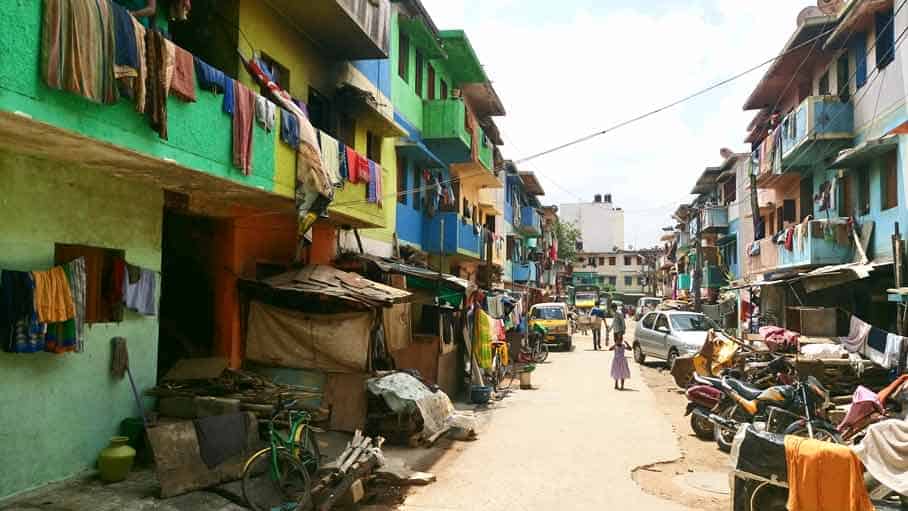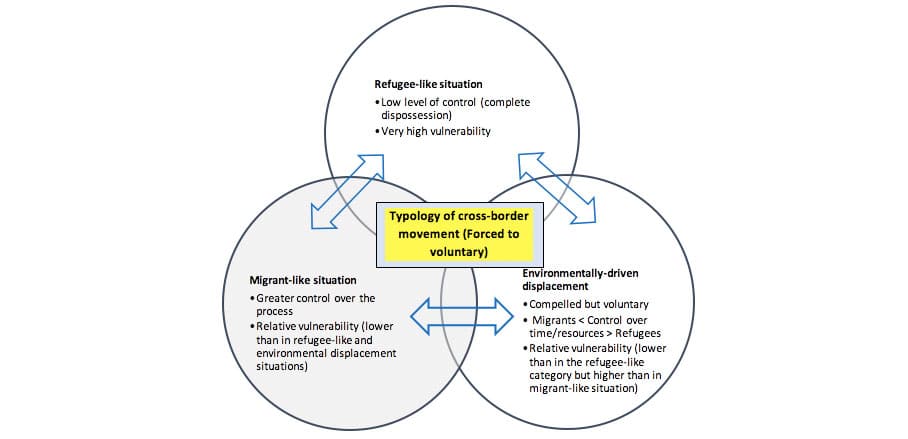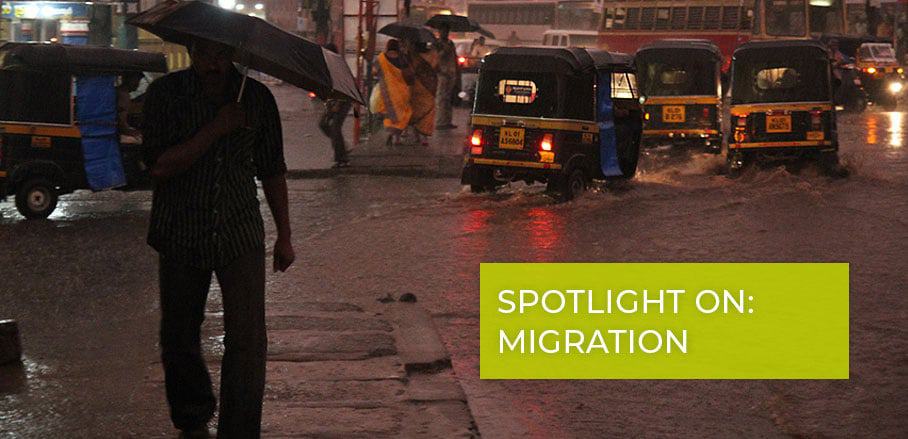Taking Cues from People’s Movements for Governing Climate Change Induced Migration
An increasing number of droughts, floods, and other hazards mean that more and more people are deciding to migrate. Ritwika Basu describes what is needed at the governance level to deal with climate change induced migration.
Climate Change and Internal Migration are More Intertwined Than We Think
The recent farmer protests for security and dignity in farming on the streets of Delhi, the Kisan Mukti March or Walk for Farmer Freedom, is perhaps the most intuitive window to the climate-migration story. The farmers’ walk to the parliament was vociferous. Agriculture, still the primary source of livelihood for the majority of rural India, is more threatened than ever. The latest report by the World Bank, Groundswell, corroborates this.
The same report suggests that by 2050, South Asia will become home to the largest share of food and livelihood insecure people. Heavy reliance on monsoon for agriculture and other climate hazards will prominently shape people’s movements across regions for food and livelihood security. In India alone, the Economic Survey (2016-17) by the Indian government found nearly 100 million people on the move in a given year.
Outmigration from environmentally harsh or climate stressed regions is not new. However, it is on the rise. In research conducted by Chandni Singh and myself in semi-arid transitioning regions of South India, we found migration to be a very versatile process (Singh and Basu, forthcoming [1]This research was undertaken as part of the Adaptation at Scale in Semi-arid Regions project (ASSAR), jointly funded by the IDRC and DFID.). In this particular context, migration patterns themselves as well as their impacts and the meanings ascribed to them, make it difficult to clearly determine if climate change or other factors are the main drivers. However, in essence, migration is a barometer for resilience.
Including Migrants in a Multi-Level Governance Context
The current development model in India, like in many developing contexts, is trapped in populist modalities of rural-urban divide that are not able to account for migrant as well as resource flows. Together with a skewed preference for GDP-obsessed sectors, these conditions exacerbate livelihood vulnerabilities for many. Migration in such scenarios is often an indication of risky, undesirable, and far from fulfilling lives.
Among other factors, the inability to account for “invisible” climate risk multipliers in institutional frameworks constitutes an important governance challenge. For example, unviable farming due to climate variability alongside stagnating rural non-farming sectors have serious ripple effects on market stability, the health of workers, and income security.
Governing for risks that have spill-over effects demands varied expertise and collective action. Grappling with the invisibility of such myriad interdependencies needs robust science, but also experimental forms of collaborative governance and social learning between varied stakeholders to mirror and adapt to a changing risk landscape.
In the last two decades, several studies have investigated the relationship between climate change impacts and migration and assessed a variation of scenarios ranging from no significant impact to coping, to adaptation and mal-adaptation. Our own research (cited earlier) of migrant life trajectories is a testimony to similar migration trends and outcomes. Deliberating policy solutions to a wide-spread, yet fine-grained phenomenon like migration therefore warrants caution and nuance.

Drought-prone village in North Karnataka with high-levels of seasonal out-migration and exhibiting gradual exodus due to unviable agriculture and lack of viable alternatives. © Author as part of the ASSAR project

Urban informal settlement in Bangalore that receives migrants of all types from North Karnataka. © Author as part of the ASSAR project
Tracing Migration in Global Climate Policy
As far back as 1990, the Intergovernmental Panel on Climate Change (IPCC) asserted that climate change will have jeopardising impacts on human mobility. The panel highlighted “trapped populations” in climate stressed regions who are unable to move as a grave concern. Since then, systematic efforts to decrease structural vulnerabilities underlying migration, both in and outside of climate hostile regions have been on a rise. For instance, the recently held Intergovernmental Conference in Marrakech called for a politically binding commitment from nation states to adopt the Global Compact for Migration for “safe, orderly and regular” migration.
Recent publications from leading agencies like The Outlook on Migration, Environment and Climate Change (IOM, 2018) confront the “lack of a universally accepted definition” of what constitutes environmental or climate induced migration with the aim to propel action at the national scale. The World Bank’s latest Groundswell report further demystifies internal migration in regions with convoluted but demonstrated climate impacts. These include South Asia, Sub-Saharan Africa and Latin America. The reports urge for flexibility, and a forward-looking attitude to a problem with an uncertain magnitude.
The diagram presented below sketches the overlapping types of cross-border migration in the context of climate and environmental change.

Author’s depiction based on review of conceptual frameworks
The diagram underscores the importance of recognising mobility as a ‘continuum’ when facilitating migration- or climate-centric intervetion. Here, I identify three broad typologies based on the extent and irreversibility of vulnerability, and control that individuals possess prior and after the move. The overlap points to a demand for convergence between regional disaster risk reduction and preparedness, sustainable development, and vulnerability reduction programs to make migration safer, and reduce vulnerabilities of people on the move.
Grounding up
Going back to the Walk for Farmer Freedom protest, it is a far cry to power nodes at the center. Policy attention to livelihood security through sound welfare mechanisms for “distress migrants” is gaining traction in migration and related debates in India.
We see decades of engagement from diverse actors gradually translating into unified demand for convergence between policies, legislatures and state-led provisions. These include adequate documentation of migrants for improved access to better services and social inclusion, education and vocational training for migrant youth and children, the enforcement of existing labour acts to prevent exploitation and abuse, and involvement of civil society and other non-state actors to ensure financial and political inclusion.
It is important to note that while the decision to migrate or to stay is made in individual contexts, the factors that trigger migration and determine the ease or difficulty of migrating as well as the outcomes are decisively embedded in a multi-scalar development context. We can see a global consensus emerging around the need for promoting development pathways that allow societies, economies, and institutions to choose from a diverse spectrum of options to adapt to a climate-uncertain world.
In the context of India, that would mean fostering a sense of security in livelihoods cutting across rural-urban geographies, investing in vocational training alongside formal education, promoting entrepreneurship and enforcing laws and policies that foster peaceful coexistence and inclusion for all social groups. Pathways are possibilities that are as diverse as humans. Climate-centric policies therefore must embrace human potential to survive and adapt, irrespective of people’s changing relationship with space.
